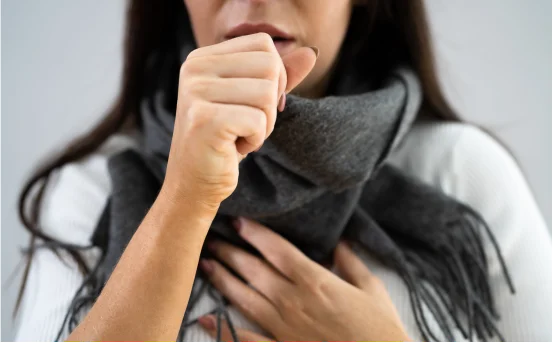Microvascular surgery is a specialized surgical technique used to repair and restore small blood vessels and nerves, often with the help of a surgical microscope. This technique is most commonly employed in reconstructive surgeries where precision is critical, such as after cancer removal, trauma, or to manage chronic wounds. It allows surgeons to transplant tissue from one part of the body to another while reconnecting tiny arteries and veins to ensure proper blood flow. But what leads to the need for this highly advanced surgical approach? Understanding the various causes can help patients, caregivers, and healthcare providers make informed decisions regarding treatment and care.
Causes of Microvascular Surgery
- Traumatic Injuries and Accidents
One of the most common reasons for microvascular surgery is trauma. Road accidents, industrial injuries, or severe lacerations can cause deep tissue damage, cutting off blood supply to muscles, skin, or limbs. In such cases, microvascular surgery is essential to reconnect blood vessels and salvage the affected part. For example, in finger or limb reattachment procedures, the surgeon must meticulously stitch together arteries and veins smaller than 1–2 millimeters in diameter. Without microvascular repair, the tissue would die due to lack of blood supply, potentially leading to amputation.
- Cancer Surgery and Reconstruction
Patients undergoing surgery for head, neck, breast, or oral cancers often require the removal of large areas of tissue to completely eliminate the tumor. This removal can leave significant defects that affect both function and appearance. Microvascular reconstructive surgery plays a vital role here by transferring healthy tissue (free flap) from another part of the body and connecting its blood vessels to the surgical site. This technique is especially helpful in preserving speech, swallowing, or facial expressions after cancer surgery, significantly improving quality of life.
- Congenital Abnormalities and Birth Defects
Some individuals are born with congenital conditions like vascular malformations, cleft lips or palates, or underdeveloped limbs and tissues. In such cases, microvascular surgery is often used during reconstructive procedures to enhance form and function. These surgeries are particularly important in children as they can help ensure normal development and reduce the risk of future complications. For example, microvascular flaps may be used to correct large facial deformities or to construct functional hands or limbs in children born with abnormalities.
- Chronic Wounds and Diabetic Foot Ulcers
Long-standing diabetes can lead to poor blood circulation, especially in the lower limbs. This results in chronic wounds or diabetic foot ulcers that do not heal with conventional treatment. When wounds remain open for too long, they become infected and can lead to tissue death or gangrene. In such cases, microvascular surgery can improve blood flow to the affected area either by transferring tissue with a healthy blood supply or by performing bypass procedures. This not only promotes wound healing but can also prevent amputation.
- Peripheral Artery Disease (PAD)
PAD is a condition in which blood vessels in the limbs become narrowed or blocked due to plaque buildup, reducing blood flow. In advanced stages, patients may experience pain, ulcers, or gangrene. Microvascular techniques can be used to restore circulation by bypassing the blocked vessel using a graft or by transferring tissue flaps with good vascular supply. These procedures help relieve symptoms, improve limb function, and reduce the risk of limb loss.
- Revisions After Failed Surgeries
Sometimes, patients undergo cosmetic or reconstructive surgeries that fail due to poor healing, infection, or insufficient blood flow. Microvascular revision surgery is often needed to salvage these failed procedures. Surgeons may perform a second reconstruction using a free tissue transfer and reconnect the blood vessels under a microscope. This ensures better healing and improved aesthetic or functional outcomes, especially in complex cases involving breast reconstruction or facial surgery.
- Severe Burns and Tissue Loss
In cases of major burns, especially third-degree burns, large portions of the skin and underlying tissue may be destroyed. Microvascular surgery enables the surgeon to use healthy tissue from another body part to replace the damaged areas. This transferred tissue must be carefully connected to nearby blood vessels to ensure survival. These procedures are crucial for recovery and for preventing long-term disability or infection in burn patients.
- Bone Damage Due to Radiation (Osteoradionecrosis)
Radiation therapy, while effective in treating cancer, can damage the blood vessels in surrounding tissues. Over time, this can lead to bone death, a condition known as osteoradionecrosis. Patients with this condition may experience pain, exposed bone, and non-healing wounds, especially in the jaw or face. Microvascular free flap surgery is often used to replace the damaged tissue and bone with healthy, vascularized tissue from another part of the body, significantly improving healing and function.
- Facial Palsy and Nerve Repair
In cases of facial nerve damage due to trauma, tumors, or surgery, microvascular techniques are often employed to repair or replace the damaged nerves. Surgeons may perform nerve grafts or muscle transfers to restore facial movement. This is particularly important in improving facial symmetry, blinking, speech, and expression.
- Limb Salvage in Complex Orthopedic Conditions
Some orthopedic conditions, such as tumors in the bones or chronic infections, may require the removal of a large segment of bone or muscle. Microvascular tissue transfer allows for reconstruction and limb salvage, helping patients avoid amputation. This technique is especially beneficial for younger patients or those with high physical demands.
Conclusion
Microvascular surgery is a groundbreaking advancement in modern medicine, offering hope and healing in cases where traditional techniques fall short. From repairing crushed limbs after accidents to reconstructing tissues after cancer surgery, the applications of microvascular surgery are vast and life-changing. Understanding the causes that lead to the need for such a precise and specialized technique helps patients and families make informed decisions and seek the right care at the right time. With the right surgical team and approach, patients can expect not just recovery, but restoration of function and a better quality of life.























